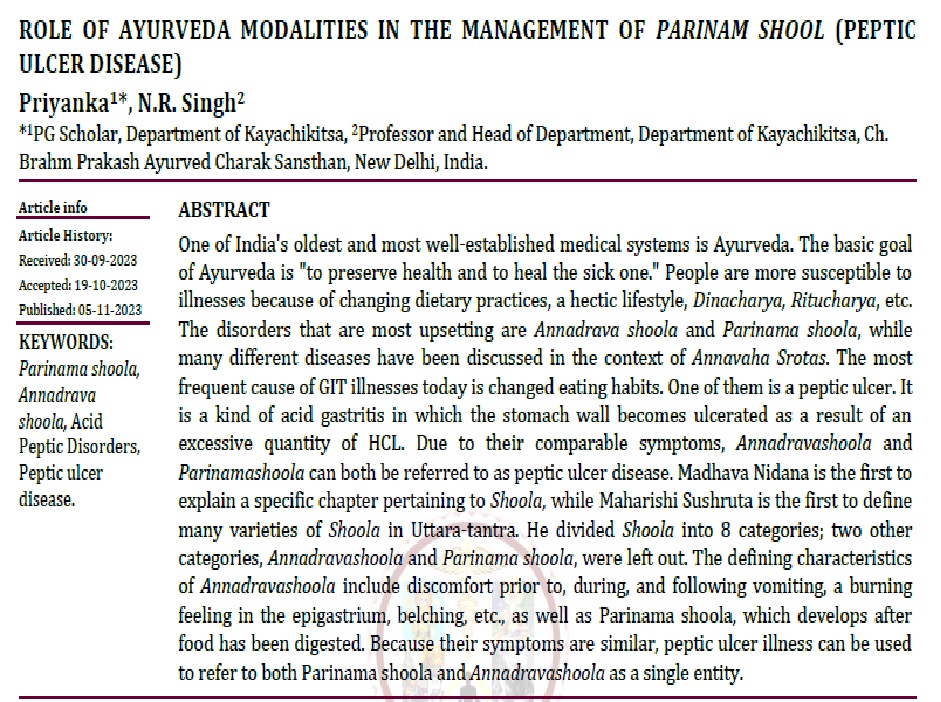Role of Ayurveda Modalities in the Management of Parinam Shool (Peptic Ulcer Disease)
DOI:
https://doi.org/10.47070/ayushdhara.v10i5.1409Keywords:
Parinama shoola, Annadrava shoola, Acid Peptic Disorders, Peptic ulcer disease. etc.Abstract
One of India's oldest and most well-established medical systems is ayurveda. The basic goal of Ayurveda is "to preserve health and to heal the sick one." People are more susceptible to illnesses because of changing dietary practices, a hectic lifestyle, Dinacharya, Ritucharya, etc. The disorders that are most upsetting are Annadrava shoola and Parinama shoola, while many different diseases have been discussed in the context of Annavaha Srotas. The most frequent cause of GIT illnesses today is changed eating habits. One of them is a peptic ulcer. It is a kind of acid gastritis in which the stomach wall becomes ulcerated as a result of an excessive quantity of HCL. Due to their comparable symptoms, Annadravashoola and Parinamashoola can both be referred to as peptic ulcer disease. Madhava Nidana is the first to explain a specific chapter pertaining to Shoola, while Maharishi Sushruta is the first to define many varieties of Shoola in Uttara-tantra. He divided Shoola into 8 categories; two other categories, Annadravashoola and Parinama shoola, were left out. The defining characteristics of Annadravashoola include discomfort prior to, during, and following vomiting, a burning feeling in the epigastrium, belching, etc., as well as Parinama shoola, which develops after food has been digested. Because their symptoms are similar, peptic ulcer illness can be used to refer to both Parinama shoola and Annadravashoola as a single entity.
Downloads

Downloads
Published
Issue
Section
License
Copyright (c) 2023 AYUSHDHARA

This work is licensed under a Creative Commons Attribution-NonCommercial-ShareAlike 4.0 International License.


